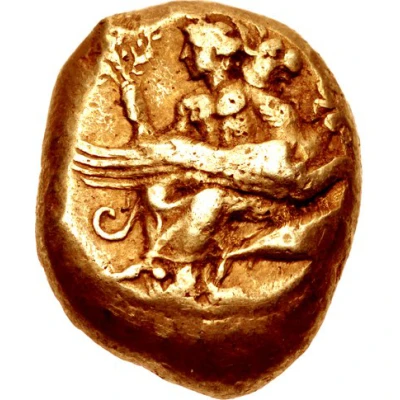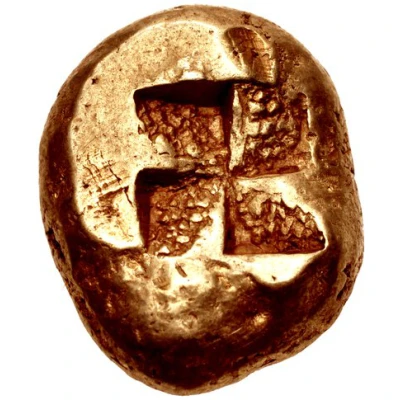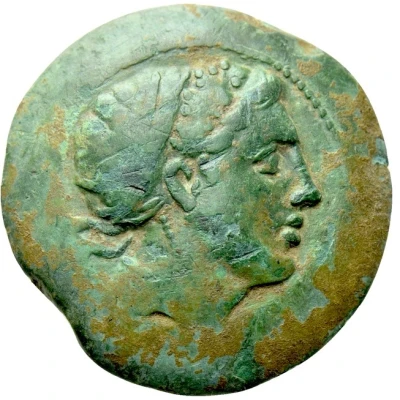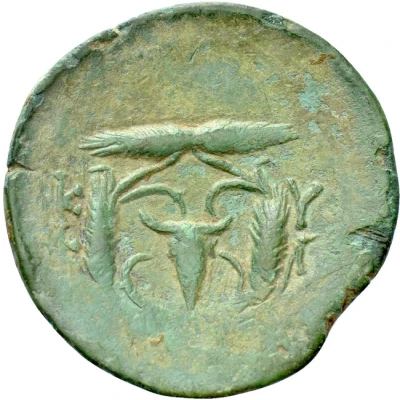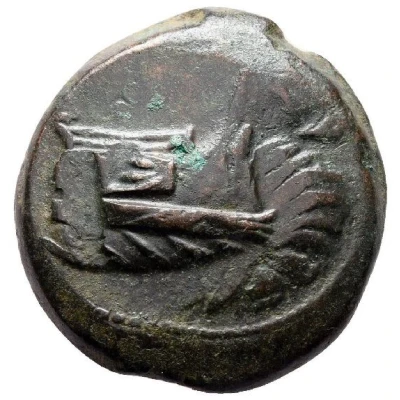


© Savoca Numismatik GmbH & Co. KG
Æ28 - Kyzikos 300 BC - 200 BC
| Bronze | 13.5 g | 28.0 mm |
| Issuer | Kyzikos (Mysia) |
|---|---|
| Period | City administration (600 BC - 1 AD) |
| Type | Standard circulation coin |
| Years | 300 BC - 200 BC |
| Currency | Drachm (500-27BC) |
| Composition | Bronze |
| Weight | 13.5 g |
| Diameter | 28.0 mm |
| Shape | Round (irregular) |
| Technique | Hammered |
| Orientation | Variable alignment ↺ |
| Demonetized | Yes |
| Updated | 2024-10-10 |
| Numista | N#426341 |
|---|---|
| Rarity index | 100% |
Reverse
Bucranium (bull's skull) within wreath.
Script: Greek
Lettering: KYZI
Translation: Kyzikos
Interesting fact
One interesting fact about the Standard circulation coin Æ28 - Kyzikos (300 BC - 200 BC) from Kyzikos (Mysia) made of Bronze weighing 13.5 g is that it features a unique blend of Greek and Persian influences in its design. The coin's obverse side bears the image of a bearded Greek god, possibly Zeus or Poseidon, while the reverse side features a stylized representation of a Persian king, likely Artaxerxes II or III. This fusion of cultural styles reflects the complex political and cultural dynamics of the ancient region of Mysia, which was situated in the northwestern part of modern-day Turkey and was influenced by both Greek and Persian civilizations.
